#stonefly
Explore tagged Tumblr posts
Text

Name: Dwayne
Skill: Quiet Retreat
Quote: "When things become too much and you feel that you need a break from it all, feel free to visit me. You will always be welcome."
(Image by tshahan on iNaturalist)
149 notes
·
View notes
Text

Stonefly, hivewing/icewing hybrid.
Progress below, feel free to suggest what I should do next.

#Stonefly#wof#wof art#wings of fire#wings of fire art#dragon#dragon art#art#oc#ajkplay art#butterscotchblu art
22 notes
·
View notes
Text

Stonefly (Perla bipunctata) By: Neville Fox From: Éditions Rencontre Cards 1978
29 notes
·
View notes
Text

Pošvatka jarní / Taeniopteryx nebulosa
-L.F.
#really enjoy the venation in stonefly wings#insect#Pošvatka jarní#photography#my photography#stonefly
13 notes
·
View notes
Text
Wet Beast Wednesday: aquatic insect larvae
This Wet Beast Wednesday is going to be different than usual. Instead of an in-depth overview of a specific species or group of species, I'm going to give a general overview of aquatic insect larvae as a whole and then showcase some groups of insects. I'm going to focus on insects that have an aquatic larval stage and terrestrial adult stage, saving adult aquatic insects for another post.
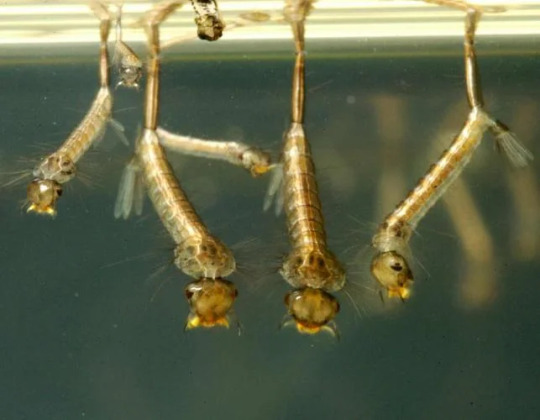
(Image ID: a group of mosquito larvae. They are yellowish bugs with long, slender bodies, no visible limbs, small heads, and feathery appendages from their rear ends. From the back of the abdomen, a snorkel-like appeadage attaches to the surface of the water, using surface tension to allow the larvae to hang from the surface. End ID)
Insects are basically the most successful group of animals in the history of life on Earth and have adapted to live in just about every terrestrial habitat. It should not be much of a surprise than that they have also moved into the water. More specifically, fresh water as almost all aquatic insects inhabit fresh or maybe brackish water. Only the water strider genus Halobates are truly marine. Some species of insect are aquatic for their entire lives, some are primarily terrestrial but able to swim, and some are aquatic only for their larval stage of life. These aquatic larvae species are generally agreed to have evolved from fully terrestrial ancestors. The adaptation of partially returning to the water has evolved independently many times in many different clades of insect and so different species use different strategies and adaptations. It is possible that aquatic larvae evolved in response to high competition for resources on land. If multiple species are competing over the same resources during their larval stages but one of those species manages to adapt to a whole new environment, that species will now have abundant access to resources the other species are unable to get to. Because of the very different lifestyles required for aquatic and terrestrial animals, aquatic larvae often look very different than their adult forms.
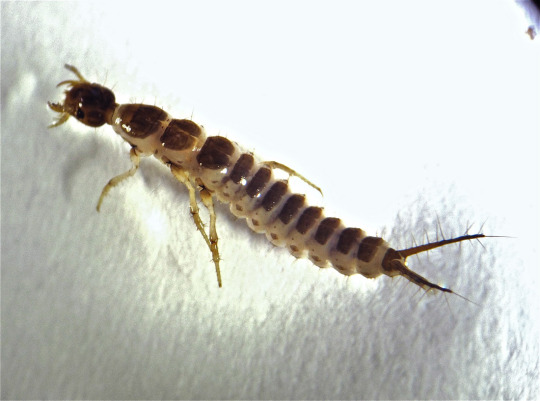
(Image: an aquatic beetle larva. It looks nothing like an adult beetle, instead being a long, slender insect with no wings, multiple body segments, and two hairy appendages at the base of the abdomen. End ID)
Aquatic larvae serve important roles in their ecosystems. Many are herbivores or detritivores that consume algae and bits of biological material, helping recycle nutrients and clean the water. Some are predators that hunt smaller invertebrates or plankton. Importantly, aquatic insect larvae provide a major food source for larger fish, invertebrates, birds, and so on. Some species can be considered keystone species, vital to their ecosystems. Many species are highly sensitive to changes in their environment, allowing them to act as indicator species for the health of their ecosystems. The trio of mayflies, stoneflies, and caddisflies are very commonly used as indicators of pollution as all three are highly sensitive to pollutants. A stream with few mayflies, stoneflies, or caddisflies but plenty of less sensitive species is likely to be polluted.
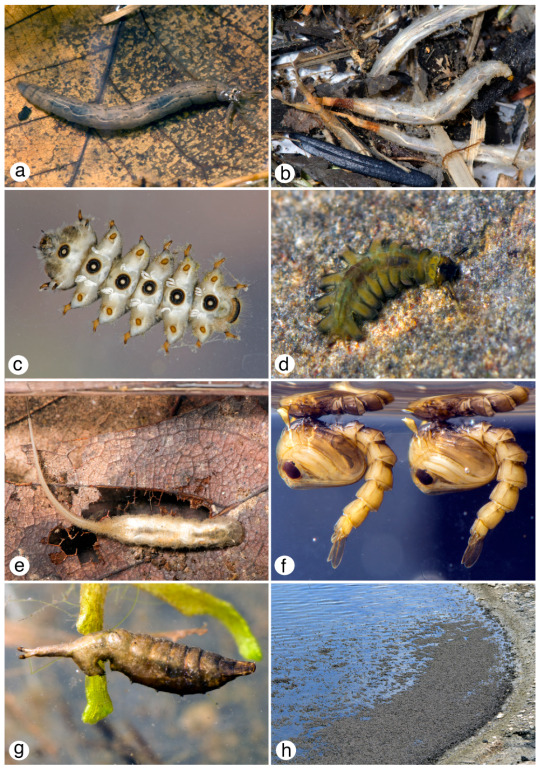
(Image ID: a collage of aquatic larvae of multiple species in the order Diptera (true flies. They vary from slug-like to having multiple distinct body segments with legs, to looking like maggots with long tails. End ID. Source)
Mayflies (order Ephemeroptera) are among the oldest lineages of winged insects, bearing traits that they first flying insect also had. Juvenile mayflies are technically not larvae, but nymphs. The difference between a larva and a nymph is that nymphs look much more like the adult stage than larvae do. Mayfly nymphs lack the wings of adults, but have external gills growing from the sides of their abdomens. Mayfly nymphs can be identified by three appendages called cerci that emerge from the back of the abdomen. They are bottom-dwellers that typically live under rocks and other objects or amid plants. Most are herbivores, feeding mainly on algae. Months to years after hatching (species dependent), mayflies will float to the surface and go through a molt to a stage called the subimago. Uniquely among insects, mayflies go through two final winged molts. The first is to a not sexually mature stage called the subimago, then they quickly molt again into a fully mature imago stage. These molts happen in sync, resulting in hundreds to thousands of mayflies appearing all at once and swarming together to mate. Famously, adult mayflies exist only to mate and die. Their digestive systems are non-functional and few species last past a few days.
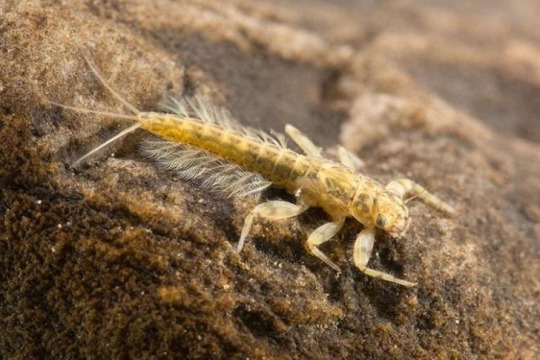
(Image: a mayfly nymph on a rock. It is a yellow bug with no wings, a long abdomen, and thick, grasping legs. Three long, hairy cerci emerge from the back. Along the side of the abdomen are multiple pairs of white, feathery gills. End ID)
Stoneflies (order Plecoptera) also have nymphs and can be quite difficult to tell apart from mayfly nymphs if you don't know what to look for. One of the biggest differences is that their gills are located by the base of the legs rather than along the abdomen. Like mayflies, stoneflies are some of the most primitive winged insects, but mayflies are Paleopterans (the earliest wings insects) while stoneflies and most other winged insects are Neopterans. The main difference is that Neopterans can flex their wings over their abdomens while Paleopterans cannot, and must hold their wings either out to the side or up in the air. Like with Mayflies, many adult stoneflies have nonfunctional digestive systems and exist only to mate and die.
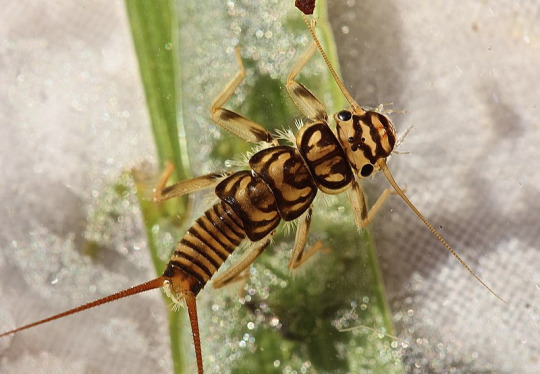
(Image: a stonefly larva. It looks similar to a mayfly larva, but has a shorter abdomen, gills along the base of the legs, and only two cerci. End ID)
Caddisflies (order tricoptera) are the builders of the aquatic insect world. These larvae (most species anyway) can produce silk from glands near their mouths. These are used to make a variety of structures made from silk and various other materials including sand, silt, plant parts, shells, rock, and so on. Different species will seek out specific materials for their structures. There are a few types of structures, the most common of which is a tubular case that is open at both ends. The larva can carry the case with it as it crawls around and can retreat into the case for protection. The larva can draw water into one end of the case and out the other, allowing oxygenated water to flow over the gills. By moving around in the case, the larva can draw in more water. This allows the larvae to survive in water that is too oxygen-poor for other larvae. Other species build different structures including turtle-shell like domes or stationary retreats. My favorite structures are nets built with an open end into current. The current naturally brings detritus and micro-invertebrates into the net, where the larva can eat them. Caddisflies also pupate into pupa that have mandibles to cut their way out of their cases and swimming legs. Once developed, the pupae swim to the surface and molt into their adult forms. This molting is synchronized to ensure the adults emerge in swarms and can easily find mates.
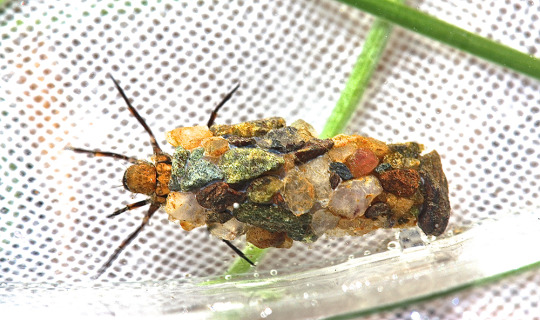
(Image ID: a caddisfly larva in its case. The case is a tube composed of pebbles of different colors stuck together with silk. The head and legs of the larva are merging from the front of the case. End ID)
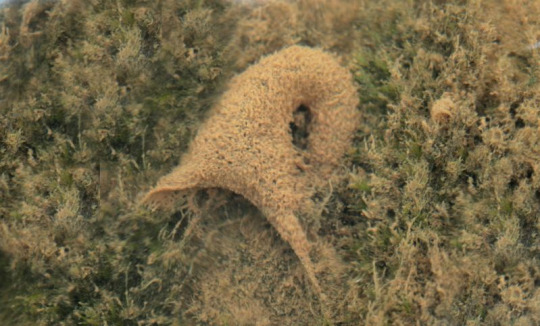
(Image: a caddisfly net. It is a structure made of silk shaped like a tube that is wide at one end and tapers toward the other. It is curved so both ends face the same way. End ID)
The order Megaloptera consists of alderflies, dobsonflies, and fishflies. All three have aquatic larvae, but their eggs are laid on land. Most species lad their eggs on plants overhanging the water so the larvae fall in once hatched, though a few lay eggs near the water's edge, forcing the larvae to crawl in. Meglaoptera have the least amount of differences between larva and adult of all holometabolous (pupa-forming) insects. The largest differences between the larvae and adults is the larvae lack wings and some species have leg-like prolegs. All species are carnivorous as larvae and feed on other invertebrates.
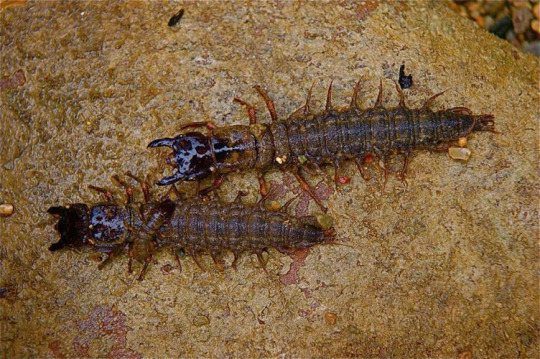
The adults don't look any less creepy
(Image: two hellgrammites, the larval form of a dobsonfly. It looks somewhat like a centipede with three pairs of limbs and a long abdomen with multiple pairs of leg-like prolegs. The head has no visible antennae, but does have a pair of powerful pincers. End ID)
Order Odonata consists of dragonflies and damselflies. These are powerful predators both as nymphs and adults. As nymphs, the juveniles are shorter and stockier than the adults, with no wings. The nymphs (or naiads) breathe through gills. In damselflies, these gills can be external, but dragonfly nymphs have their gills located in the anus. Damselflies can swim by undulating their gills, but dragonfly nymphs are restricted to crawling. The nymphs are voracious predators that will feed on anything they can catch. Most of their diet consists of invertebrates, but they will also attack small fish, tadpoles, and even salamanders.
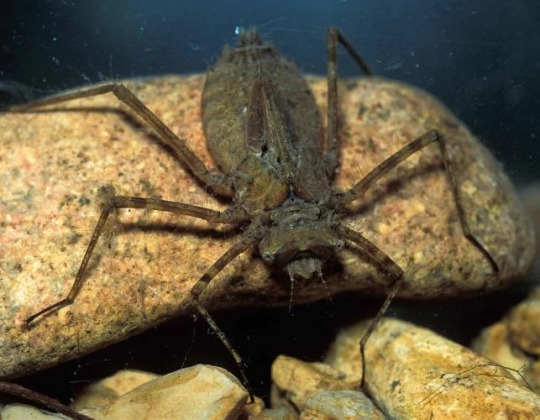
(Image ID: a dragonfly larva on a rock. Its head is similar to that of the adults, but the abdomen is much shorter and broader and the legs are longer. It has no wings and is brown all over. End ID)
The groups of insects I covered today (plus the stoneflies) all have exclusively or near-exclusively have aquatic larvae while the adults are terrestrial. In other groups, aquatic larvae may be present in some species while others have terrestrial larvae. For example, a great many members of the order Diptera (true flies) have aquatic larvae including all mosquitos, while other members of the order have fully terrestrial larvae. In addition there are species of beetle (order Coleoptera), moth (order Lepidoptera), lacewing (order Neuroptera), and scorpionflies (order Mecoptera) that have aquatic larvae and some species of the true bugs (order Hemiptera) have aquatic larvae and aquatic adults, including water skaters, water scorpions, and giant water bugs. Aquatic insects are so prevalent that it is rare to find any lasting body of water that doesn't host some aquatic larvae or adults. Even incredibly stagnant and filthy water can host aquatic insect larvae, as shown by the notorious rat-tailed maggots, who love stagnant water and breathe through snorkels. Many species require very specific conditions and there are species of insect who exclusively grow their larvae in specific streams or lakes. Because of this, conservation of these bodies of water is vital to their survival and pollution, damming, and other factors can destroy whole species.
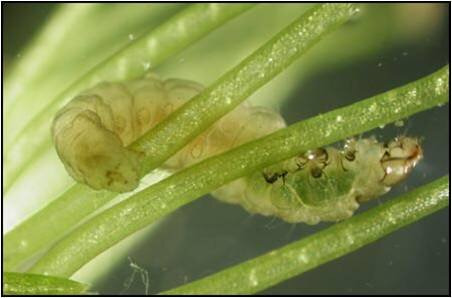
(Image: an aquatic moth larva. It looks very similar to a green land caterpillar, with none of the fancy elements many land species have. It is translucent and wrapped around some aquatic plant stems. End ID)
#wet beast wednesday#insects#insect larvae#aquatic insect larvae#larva#pupa#mayfly#stonefly#caddisfly#dobsonfly#hellgrammite#dragonfly#damselfly#freshwater ecology#ecology#biology#zoology#invertebrate#invertebrates#animal facts#informative#bug#bugs
82 notes
·
View notes
Text




Stonefly larvae (antennae big guy) and the caddisfly larvae (worm) from earlier! I’m a big fan of the way stonefly larvae will scurry around your hand rapidly when you pick them up like a roach.
#aquatic insects#entomology#insects#bugs#nature#science#my photos#caddisfly#trichoptera#stonefly#Plecoptera
39 notes
·
View notes
Text
stonefly skedaddle....
#(3/25/2025)#im always very excited to see these guys!! so cool....#plecoptera#insect#bug#stonefly#audio in video is just river/bird noises.
8 notes
·
View notes
Text

First stonefly of the year!! You can see them arching up to look at the camera!
22 notes
·
View notes
Text
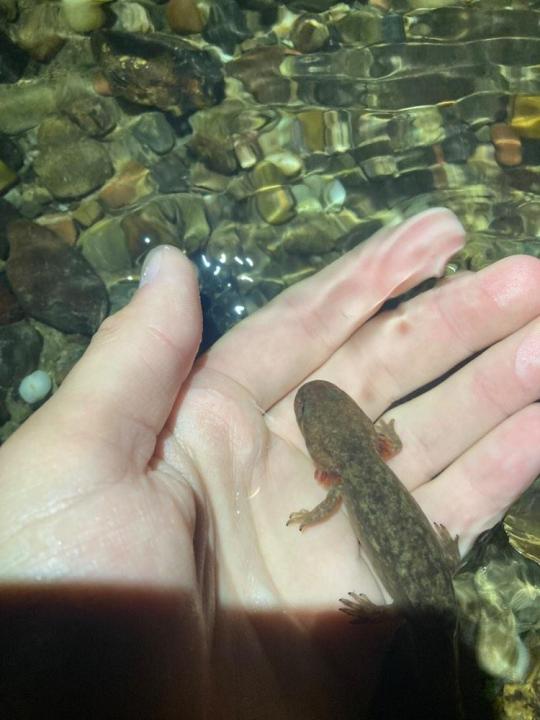

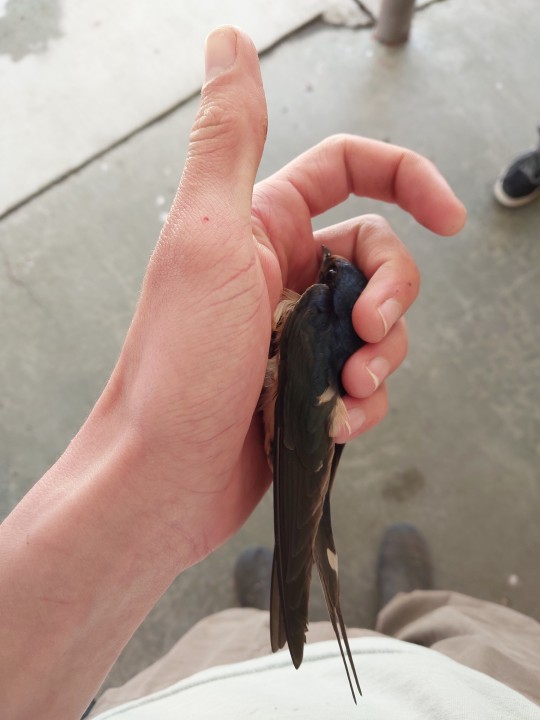
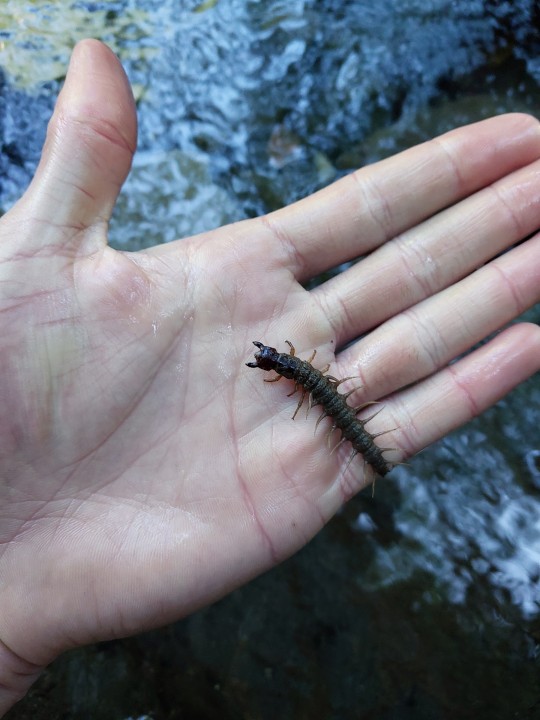
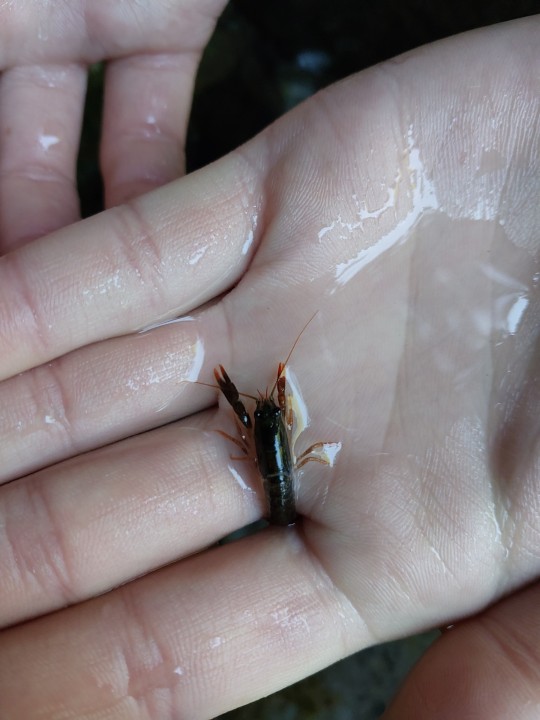
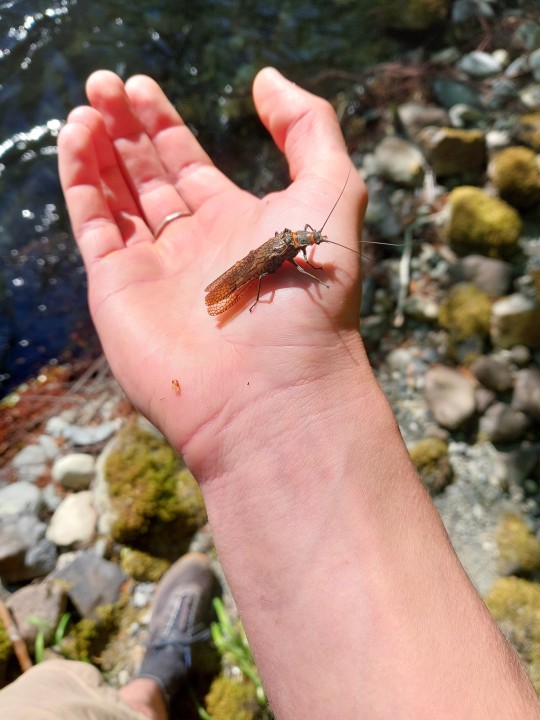
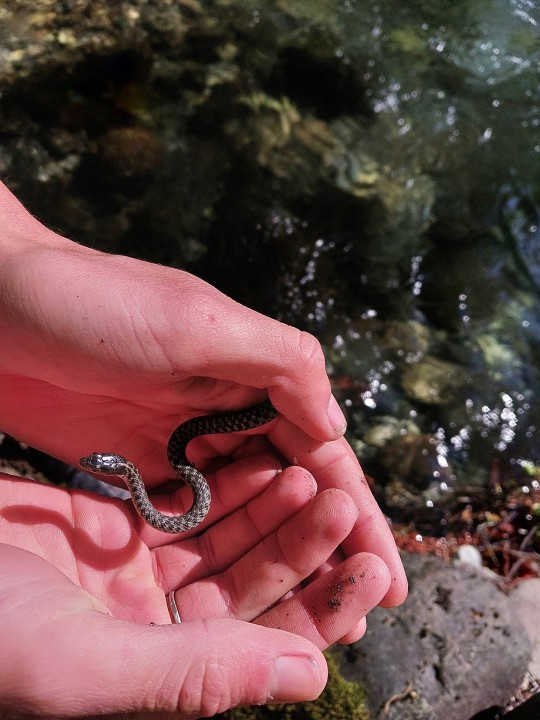

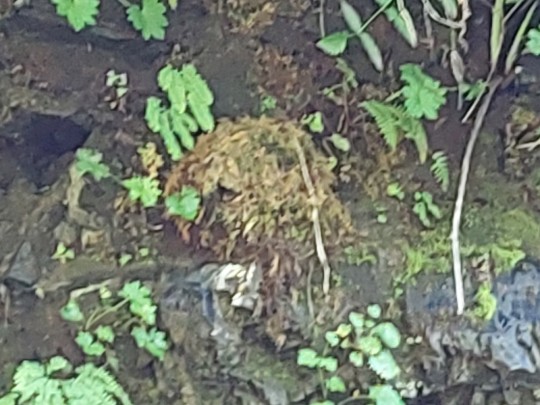
fFucking creatures post
fun fact theres no picture here of the American Dipper (bird) but the last picture is of its nest- dippers are so sick they can like jump into fast-moving streams and angle their wings downward to use the water pressure to hold them at the bottom while they walk along and look for aquatic arthropods
also any time they are standing around they kind of like... bounce??? like theyll sort of bend and unbend their knees and just do a little pop squat every couple seconds
extremely good bird
#salamander#salamander larva#dicamptodon#i think#lamprey#a fucking lamprey#barn swallow#i caught a bird with my hand#hellgrammite#is the coolest name ever#aquatic insects#dobsonfly#crawdad#i refuse to call it a crayfish just like i refuse to call sea stars starfish#yabbie is acceptible#stonefly#garter snake#of some sort#bee#that landed on my arm while i was posting this#american dipper#bird nest#its like a little cave built out of moss????
11 notes
·
View notes
Text
#2444 - Stenoperla sp. - Large Green Stonefly

They also come in gold, apparently.
Another unexpected find inside the house - all four species in the genus are endemic to New Zealand, but despite the vivid colour I'm unsure which one this is. I wasn't even sure what Order it was from - this is the first time i've seen a stonefly. Like others in their family (found in Australia, New Zealand, and Chile) Stenoperla nymphs are aquatic and carnivorous, and take two or three years to reach adulthood, but like most other Plecoptera families are intolerant of water pollution.
Stoneflies are one of the oldest insect groups that can fold their wings - close relatives are known from the Carboniferous and Lower Permian. A few wingless species might be the only insects that are fully aquatic from hatching until death.
Mangorei, Taranaki, New Zealand
10 notes
·
View notes
Text

Name: Jeremald
Skill: Verflare
Quote: "its so colda here... but thats just how i like it !!"
(Image by nonfictionsteve on iNaturalist)
59 notes
·
View notes
Text






I saw SO MANY BUGS TODAY!!!
These were all within like 5 minutes of each other :D !!!
#I saw so many buggies!!!#insect#bug#fuffles bugs#YAAAAAAY SPRING!!!!#bee#stonefly#cadis fly#weevil#and I think the little one is some kind of wasp
3 notes
·
View notes
Text

Not who you expected to show up for the blood draw...
Smokies Needlefly (Megaleuctra williamsae)
North & South Carolina, Tennessee, and Virginia, USA
Status: endangered in NC, TN, and VA
---
become a member on ko-fi || newsletter
#needlefly#stonefly#insect#fly#bug art#insect art#north america#usa#north carolina#south carolina#tennessee#virginia#tw: needles
8 notes
·
View notes
Video
youtube
Maria Somerville - Stonefly (Official Video)
3 notes
·
View notes
Text

The Six of Horns represents themes of transition, moving on, and accepting lessons. It reflects the courage it takes to leave the familiar behind, stepping into the unknown for personal growth. It is a card of transition, emphasizing that while the path may not be entirely smooth, there is a promise of tranquility on the horizon. The calm waters suggest emotional healing and a departure from tumultuous times. It whispers of resilience, urging individuals to navigate the currents of change with grace and acceptance.
The aquatic stoneflies spend a significant part of their lives underwater, navigating its perilous currents. However, they eventually transition into their adult form and take flight, symbolizing the journey toward new horizons from turbulent waters to calmer skies. This card prompts us to recognize the inevitability of change and transition, much like stoneflies navigating between water and air. It encourages us to trust in the process of moving from challenging situations to more peaceful ones, understanding that these shifts are a natural part of life.
This card underscores the importance of leaving behind what no longer serves us, just as stoneflies leave their aquatic homes for the skies. It teaches us that embracing change often requires letting go of the past and being open to new possibilities. The stonefly's transformation serves as a symbol of the potential for growth and renewal that comes with moving on. Together, they encourage us to navigate life's transitions with faith and an open heart, knowing that the journey itself can be a revelatory and enlightening experience.
Prints available on Redbubble and Inprnt
| Instagram |
#artists on tumblr#illustration#tara jillian art#nature#insects#bugs#redbubbleartist#bug tarot#tarot cards#tarot art#invertebrates#insect art#invertblr#bugblr#big bug gospel#stonefly#entomology
13 notes
·
View notes
Text

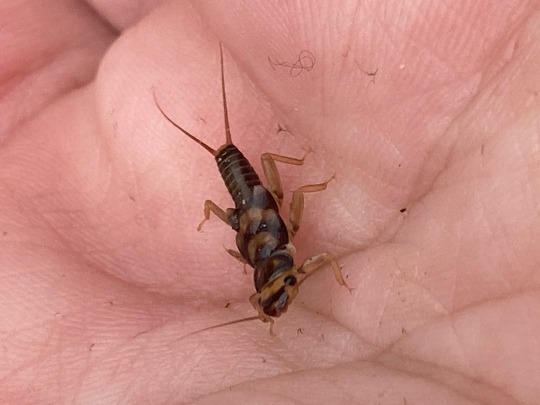





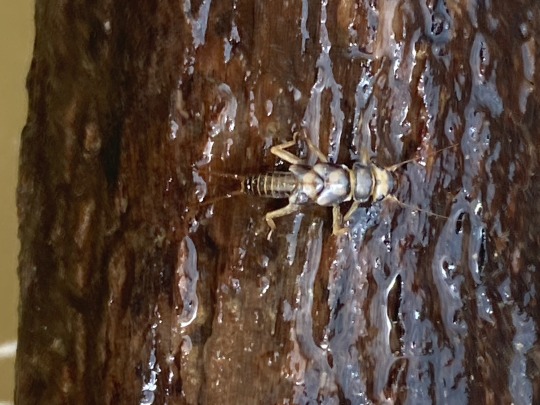
Another bug I cannot get enough of is this Plecoptera larvae. Plecoptera, the stoneflies, have such adorable larvae. Found on that piece of wood pictured last 5/5/24 in the shallows of a sandy/silty/clay river.
9 notes
·
View notes